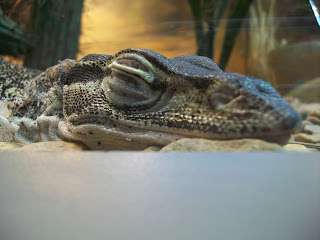Coloration is an adaptive trait, depending on habitat. These guys are in the puff adder family.
 Above: Boelen's Python (Morelia boeleni)
Above: Boelen's Python (Morelia boeleni)
Not very much in known about these beautiful animals, being discovered only 50 years ago. The colors on these animals are amazing, never seen anything like it.
 Above: Emerald Tree Boa (Corallus caninus)
Above: Emerald Tree Boa (Corallus caninus)
They are nocturnal and arboreal. This is a non-venomous boa species from S. America.
 Above: Boelen's Python (Morelia boeleni)
Above: Boelen's Python (Morelia boeleni)Not very much in known about these beautiful animals, being discovered only 50 years ago. The colors on these animals are amazing, never seen anything like it.
 Above: Emerald Tree Boa (Corallus caninus)
Above: Emerald Tree Boa (Corallus caninus)They are nocturnal and arboreal. This is a non-venomous boa species from S. America.
They are from Australia and remain in burrows during the dry season. This one was in the middle of a shed. They will stand on their hind legs to get a better look around...he obviously did not care what was going on.

He was too cute! Glad he did not suddenly decide to open those eyes while I snapped a pic. : P
To the Left: Green Tree Python (Morelia viridis)
Found in New Guinea and on the Cape York Peninsula of Australia. Due to habitat destruction, they too are endangered in their native habitats.
Found in New Guinea and on the Cape York Peninsula of Australia. Due to habitat destruction, they too are endangered in their native habitats.

To the Left: African Spur Tortoise (Geochelone sulcuta)
Feeding time!
To the Left: Galapagos Giant Tortoise (Geochelone nigra porteri)
Feeding time!
I wouldn't want to run into that big guy, American Alligator (Alligator mississippiensis), in the wild...no siree. He was beautiful though.
To the Left: Galapagos Giant Tortoise (Geochelone nigra porteri)
They can live upwards of 170 years. These guys are endangered.
Hope you enjoyed the pictures. I sure had a ball taking them. I work with domestic and exotic animals, but none to this magnitude! Have a good day everyone! Ciao.
Melanie Pigott
College of Charleston, Dr. Welch






No comments:
Post a Comment